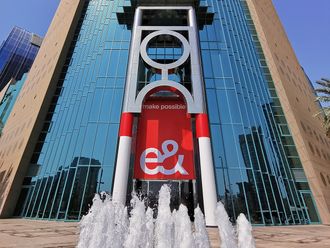While Russia and the rouble have attracted the spotlight as the oil-price meltdown has proceeded, stretched to the limit by its reliance on energy-based receipts, it’s only natural that Saudi Arabia should be considered central to this saga, as the pivotal producer and leading light in Opec.
Its fortunes form a critical aspect of the global drama, as accumulated finances and government spending are tested. The scale and timeline of that pressure, until signs of rebound return, are crucial to discussion.
In fact, though, amid the welter of worries about commodity-dependent emerging nations, the Kingdom’s ability to ride out the storm seems almost taken for granted, and it is others in the Gulf that are exposed, either as undulating investment plays (e.g. Dubai stocks) or economies with challenging budget conditions (e.g. Oman and Bahrain).
Gulf stocks bounced well last week on the basis of an official pledge that the upcoming Saudi budget would not be contractionary, but rather countercyclical in the face of the threat of slowdown.
The underlying issue is how prolonged fiscal deficits might be, and how far they will bite into the very substantial level of reserves compiled during the extended era of triple-digit oil prices.
When the IMF counselled last week that governments needed to trim expenditure while being “mindful” of the social implications, one suspects that the authorities had already got that idea covered, while still wrestling with the decision as to where exactly to strike a balance.
Besides the basic fundamentals afflicting the oil market right now (with doubtless some speculative overload as well, and disagreement within Opec), as Jadwa Investment put it in a research paper earlier this month “the countries with lower breakeven prices, better placed to cut their output (Saudi Arabia, Kuwait and UAE) are also the ones with the least incentive to do so, as they have built large financial reserves and can withstand a prolonged period of lower prices”.
Comfortable position
Note also, crucially, they are among those producing most, who could therefore make most of the difference if so inclined.
Jadwa went on, “we do not see Saudi production falling too dramatically in the next two years, [but] the strong sovereign balance sheet — with foreign reserves of more than 95 per cent of GDP and a public debt of less than 2 per cent of GDP — would put the government in a comfortable position to … avoid drastic cuts in fiscal spending that would disrupt private sector performance.”
Even on a low-case scenario for oil prices (some $75-80 per barrel) over that time frame, i.e. moving beyond the current trough, the investment firm’s report foresaw overall GDP “almost unchanged”, alongside a budget deficit of 4.6 per cent of GDP in 2015 and 7 per cent in 2016, implying “significant” cuts needed to outlays, notably on capital projects.
Picking up the same theme, global affairs consultancy Oxford Analytica retain a similarly measured line. Total reserves of the four largest GCC countries “are equivalent to several annual budgets, giving them leeway to incur deficits without debt … [although] the rapid spending growth of the past decade cannot continue”, it advised recently.
The last period of fiscal austerity, from mid-80s to late-90s “provides a useful guide to the probable shape of less expansive policy”. In fact, Saudi Arabia “abandoned capital expenditure in the 1990s almost completely”, and while subsidies and loans to industrial consumers were cut, households were substantially protected. Such basic parameters of the Saudi economy, including a commitment to public sector pay increases, “have not shifted”, but if anything have been reinforced, the briefing maintained (see charts).
The consequent concern would be that the commitment to infrastructure spending would weaken and industrial diversification be compromised. Only if budgets remained squeezed for a considerable period would current spending actually plateau and potentially decline, producing economic stagnation, senior analyst Alison Baily indicated.
Tax reform
Reforms inevitably are liable to return to the agenda across the Gulf, though, she suggested. Utility price reforms are already under way, as shown by Abu Dhabi’s adjustments to electricity and water tariffs last month. Given a certain dependence on expatriate staffing, labour reforms will remain tough to implement. Tax reform too would confront the essence of prevailing economic models.
As to immediate trends, Saudi Arabia British Bank’s latest PMI indicator, collated by Markit, showed the pace of the non-oil private sector economy essentially to be sustained last month, though slightly slower, as output, new orders and employment all increased at weaker rates. The headline figure of 57.6 remained well above the 50 mark, indicating clear expansion still, but was the lowest for six months.
Given the private sector’s tendency cyclically to follow government’s lead, we might pay closer attention to that number for an indication of how oil’s cataclysm is playing out for the whole economy. Besides, of course, to the imminent budget plans and their prospective delivery.












